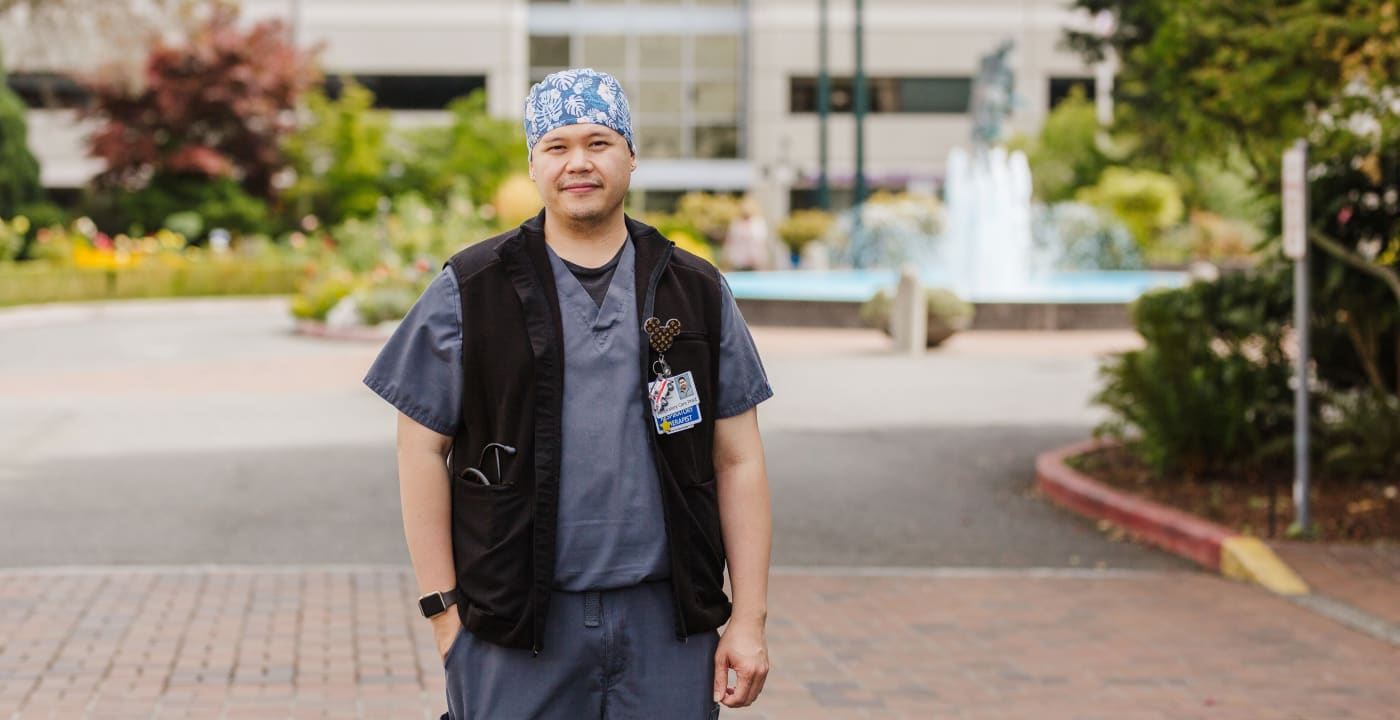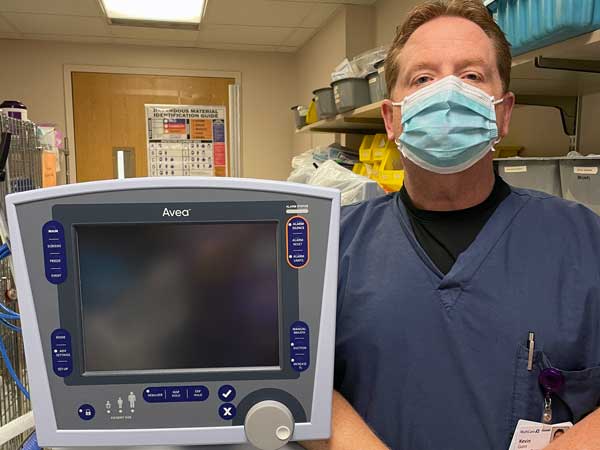The Rise of Respiratory Therapy

Flattening the curve. Virus variants. Social distancing — the COVID-19 pandemic has changed the way we talk, introducing many of us to a whole new lexicon. Another term that has been thrust into the spotlight? Respiratory therapy.
Before our lives became dominated by COVID-19, respiratory therapy was a field that tended to garner little attention. Most people outside the realm of medicine knew little about it. Yet respiratory therapists have been a vital part of the health care team for more than 50 years. Now, in large part due to COVID-19, these highly skilled, sometimes overlooked professionals are getting some long overdue recognition.
“Before the pandemic, troubled lungs weren’t something people thought about much,” says Kevin Gunn, CRT, manager of respiratory therapy services at MultiCare Deaconess Hospital. “But with COVID-19 attacking the lungs so prevalently, our experience and knowledge has really been brought to the forefront.”

Kevin Gunn, CRT, manager of respiratory therapy services at MultiCare Deaconess Hospital.
What’s in a day’s — or a night’s — work
If you ask a hospital-based respiratory therapist (RT) what a typical shift looks like, they are likely to tell you that there’s no such thing. RTs care for patients who have a lung disease or difficulty breathing, but these patients are of all ages, from infants to the elderly. And RTs are not tied to one unit; they roam all over the hospital, seeing people in the emergency department, in the intensive care unit (ICU), in outpatient clinics, in operating rooms and all the floors in between. This level of variety is often part of the profession’s appeal.
“No two shifts are really the same,” says EJ Iglesias, RRT, a respiratory therapist at MultiCare Tacoma General Hospital. “It keeps it interesting when you get to work with so many different patients and staff members. I also love the fast pace.”
As for what RTs do on a shift, the duties are innumerable: They perform procedures such as bronchoscopies, intubations and pulmonary function testing. They assess oxygen levels and the need for respiratory medications. They educate patients and help develop care plans. They assist with resuscitation efforts if patients “code” — when they go into cardiac or respiratory arrest. They operate sophisticated equipment, such as ventilators. And if they work the night shift, like Iglesias, they frequently monitor patients on CPAP and BiPAP machines to ensure their airways remain open and they can rest.
“When somebody can’t breathe, that’s a huge, scary thing,” says Gunn. “A patient will just have this look in their eye and you think to yourself, ‘Here we go — this patient needs me.’”
Taking the lead against COVID-19
When COVID-19 began to spread across the globe 18-plus months ago, it didn’t necessarily change what respiratory therapists do, but it did affect the volume of their work — and how sick their patients are. On a typical busy day, pre-pandemic, Gunn’s team at Deaconess Hospital attended to five or six patients on ventilators. Now on average, it’s about 13, sometimes even as high as 17.
“Before the pandemic, patients on ventilators often got better. You’d remove the tubes and hear their voices for the first time,” says Gunn. “Now, that doesn’t happen as much. A lot of the ICU patients with COVID-19 don’t survive. I don’t get to hear their voices, and that’s heartbreaking.”
Given the damage the disease can inflict on the lungs, RTs are heavily involved in the care of patients with COVID-19. Aside from ventilator management, they deliver breathing treatments, such as high-dose oxygen. Every day, they don extensive personal protective equipment because they conduct procedures that potentially expose them to aerosolized particles (droplets in the air) which may contain the virus.
RTs also take the lead in proning, a common strategy for treating patients in the ICU who are experiencing respiratory distress. Proning is a delicate, highly orchestrated process that entails turning a patient — who is often hooked up to a plethora of sensors, tubes and lines — onto their stomach in order to lessen pressure on their lungs.
“It takes a lot of teamwork to prone a patient,” says Iglesias. “An RT is usually at the head of the bed, serving as the primary watch for a team of seven people. The RT monitors the patient’s airway and tracks the big picture to ensure the turn is successful and everyone stays safe.”
And the teamwork doesn’t stop there. If there are silver linings to a global pandemic, one of them might be unique opportunities for collaboration among respiratory therapists and other health care professionals. For example, Gunn recalls a pregnant patient with COVID-19 who needed to deliver her baby early.
“Suddenly, people who had never worked together before were all in the same room,” says Gunn. “Respiratory therapists, labor and delivery nurses, a pediatric RT and doctors of various kinds were all involved. It was a crossover you don’t often see — there was something really special about everyone coming together like that to help this mother and her baby.”
Collaboration among colleagues is key, but so too is collaboration with patients and families.
“As RTs, we just try and support people in whatever we can,” says Iglesias, “Whether that’s answering questions, offering a treatment or even just being by their side for their last breath.”



